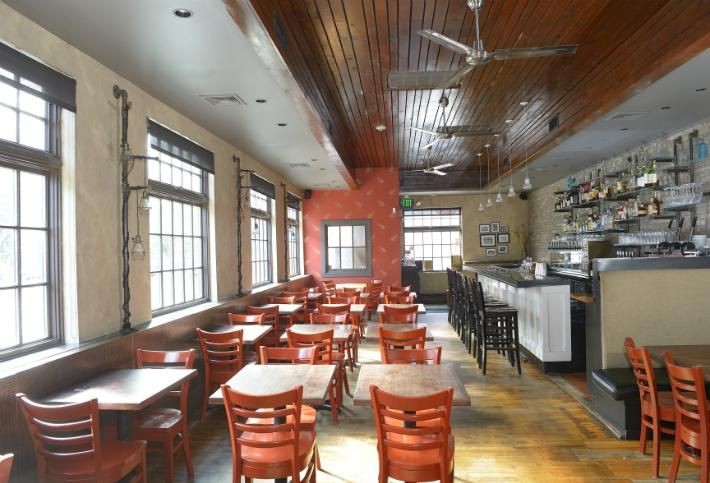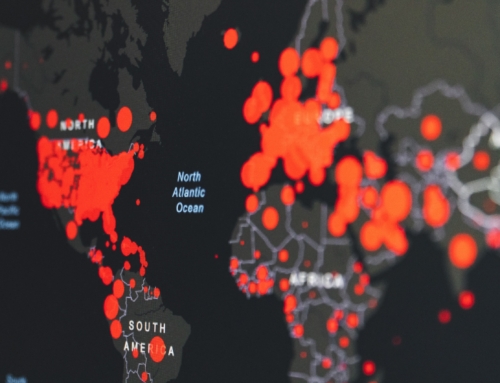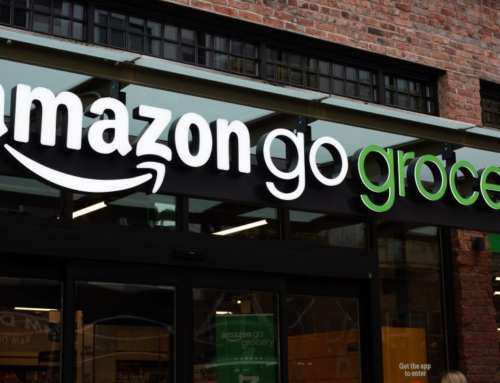D. Scott McLain, CCIM
Coldwell Banker Commercial McLain Real Estate, Huntsville, Alabama
In a matter of weeks one of the most common and pleasant activities we have enjoyed for decades came to a screeching halt. The Coronavirus has shackled the restaurant industry in a way that none of us anticipated, and it has been devastating. Not only have businesses been forced to close, curtailing their income streams and employment, but also we as diners have been deprived of a fundamental activity of our daily lives.
Human beings are in some ways predictable animals. Among other things we eat and we also are social beings. The combination of taking sustenance and engaging with friends, family, and business associates at table is a basic element of our lives. Now we have been forced into take – away only with strange concerns for our safety, and a primary loss of the social interaction we both crave and need for our lives, businesses, and society.
At some point, a highly debated timetable, we will be able to perhaps once again venture to our restaurants where we often dine multiple times per week. What will the experience be then? We endured and survived 9 / 11, but only with some profound changes in travel and security and process. Now something as basic as having a meal away from home may be much different too.
Let us start with the concerns. The concerns are about us! We have had to accept that with the Coronavirus about we are vulnerable human beings that can contract the disease and die. We are concerned about our physical health and safety from the disease and also from people that might, even unwittingly, have the disease. We are all now to some extent germaphobes. We wear masks, wash our hands all the time, keep our distance from others, and fear a sneeze as though it were the plague, which it very well might be.
Once we have a vaccine, or herd immunity, or some other level of confidence that things are okay, maybe we will venture back to restaurants. We will not likely, however, simply abandon all our new concerns and practices just as we have not abandoned those we adapted after 9 / 11.
During this time we have all, if we do not want to cook, we have resorted to drive – through windows and click and pick, or ordering online and picking up our food at the restaurant parking lot. This means of securing a meal has certainly taken the charm and fun and atmosphere and service from the restaurant experience, but it is clear that many restaurants will further specialize in this means of operation. Many restaurants already earn more from drive – through service than dine – in operation, and these operations will continue and multiply. We can expect these establishments to improve their games substantially in ways that we have not yet considered, all to make the take – away service more fun and satisfying.
Dine – In Restaurant Design and Operation
What then about the dine – in restaurants? If a restaurant had the opportunity to design a new facility from scratch in a Post – COVID 19 world it may have some of the following characteristics. For example, probably every restaurant will want a drive – through window or more sophisticated pick – up portal. This future seems inevitable. Let us consider, though, how a sit – down restaurant might soon look and feel and operate when we dine inside.
Like many places we already visit, we may have our body temperature taken as we enter a restaurant. Likely the staff member administering the non – invasive thermometer will be wearing a mask and protective gloves. If our temperature is normal then we may be welcomed into the restaurant. This admittance, however, will likely be monitored by a staff person with a counter, limiting the number of patrons even allowed in the building. If we are to wait outside we may be asked to wait in our cars or in specially separated spots.
One of the clear mandates of COVID care is social distancing, and this practice may continue to apply for quite some time. This will likely mean that restaurants will have far fewer places to sit, fewer tables, more designated aisles and traffic patterns, and barriers between guests. With this reality will restaurants grow in square footage to accommodate more diners with more space between them? Certainly reservations will be more important, even at establishments that have not required reservations before. Likely gone will be the “have a drink in the bar and we will call you in a bit.” The bar, like the restaurant will have a stated capacity of patrons, and gone will be the fun and rush of a busy and lively bar full of diners awaiting tables. Expect that you will need a reservation to sit in the bar, with a starting and ending time.
If we do want a drink from the bar before our meal, we may find pairs of bar stools separated by spaces or even barriers for distancing. There may also be velvet ropes or other barriers to keep people from invading the backs of people sitting at the bar. The intimacy and crush of a bar is likely a thing of the past.
Also near the entrance to our favorite restaurant we may see posted notices. These placards could include a statement that the restaurant staff has been specially trained in sanitation, perhaps even certified as such, and that the restaurant disclaims responsibility for any sickness that may occur to a dining patron. Restaurants will clearly do all they can to protect their guests, but they will want no responsibility for any sickness that may occur from staff, from our dining party, or other guests. Diners will have to assume some risk when dining, simply because we cannot control all of the conditions and preparation of the experience.
As we are seated at the table we may find that it looks different now. The white paper tablecloths in some restaurants will likely be ubiquitous on restaurant tables as a simple clean palette that is disposable after every service. On those tables we may also no longer see intentional tablescapes, including salt and pepper shakers, napkin holders, condiments, candles, or other décor. Silverware may be no longer wrapped in a napkin, handled by staff in so wrapping them, and perhaps now will be presented in those cellophane sleeves that you see in some restaurants – anything to limit human contact with the items we will use. Perhaps hand sanitizer will be a new table staple, but perhaps it will be dispensed from a touchless machine with a sensor. The effort will be to have as clean a dining space as the restaurant can deliver.
Our waiter may appear different to us as well. Even if we may not be wearing a mask that moment, which is indeed an inhibitor to consumption, our waiter may indeed have both a mask and gloves. Part of the experience of dining out, though, is engagement with the staff, whose face you now cannot see and whom will be inhibited as we all are by the limitations of wearing a mask.
From that waiter, no longer might we expect to be presented with a handsome menu or menu book or laminated menu. Either the menu will be displayed on a screen visible in the restaurant or displayed on a device held by the waiter, or perhaps it is simply printed on a paper designed to be discarded after every use. Perhaps some restaurants will provide menus on your telephone so that you can make your selection from your own device without touching anything that has been circulated, even if sanitized or disposable.
The content of the menus is likely to change some as well. There may be a specific dine – in menu and a specific take – away menu. Most of us know, and many restaurant chefs know for sure, that much of the food they serve is not designed to be slapped in a Styrofoam box, carried out for a half hour, and then perhaps reheated in a microwave oven for two minutes. Chefs may have to reengineer take – away food items to not only serve well, but also to travel well. Some items may simply not be available for take – away. Can you imagine a lovely cheese souffle’ after fifteen minutes in the backseat of a car?
Also, “shareable” has become not only an accepted word, but also a staple of menus across the world. To satisfy our desire for the fun and fellowship that is a major element of breaking bread together, we often order appetizers or other multi – serving items for the table. It may not be as large an issue when you dine with your family or friends, but there may not be many new – business associates meals with a bowl of fondue in the middle of the table.
As we order our beverage of choice will likely be delivered by the same masked waiter with gloved hands or by another staff member similarly attired. Any refill we order will likely be brought in a fresh glass. Our food similarly will likely be delivered more deliberately. Sight of a waiter with six meals plated and stacked deftly down one arm is likely to not occur again. Perhaps the metal plate covers common in room service deliveries will be the rage.
The back of the house will change for sure as well. Health inspections are now regularly conducted by health departments, but it seems that they will likely become far more rigorous and regular. Kitchen staff may soon be recognizable not only by their hats and cooking costumes and clogs, but also by their other protective gear, masks, hairnets, and gloves. Hot kitchens may become even hotter for kitchen staffs.
New protocols of food delivery, storage, preparation, service, cleaning, and disposal will all be required, all designed to contain germs and protect diner and staff health. There may be increased heating, ventilation, and air conditioning requirements to protect people. We as patrons will actually demand these protocols and changes, we will want to see the certifications, we will want the inspections, and we will want the cleanliness.
Once we complete our meal there may be less mid – dinner table bussing than before. All items delivered to the table have now been contaminated by us, and staff will want to carefully remove them, with protection, likely all at one time, also creating the chance to sanitize the entire space, tables and chairs, for the next patrons.
When it is time to pay do not expect many paper checks, delivered credit cards, and physical signatures. The industry has been slow to adapt currently – available technological solutions to this common process, but perhaps we will see full adoption now. The wait staff may present a screen to view, showing the tabulation of our meal. We may then have the opportunity to personally handle our credit card and to have it scanned. Likely there may be no signature but if such is still required, some new technology, of air signing or some other process, will be developed, all to reduce touch as much as possible. Receipts will likely be emailed. Another means may be paying on our own telephones, handled only by us.
One of the reasons we enjoy dining in restaurants is that we like the experience. Staff can have a major impact on that experience, but also the other diners can have a major impact. As social animals, we note when people nearby are happy or sad or having fun or mad. We often like restaurant where “everyone knows you name” and we see people whom we know. Probably, “working the tables,” with back pats, handshakes, hugs, and other greetings from table to table will no longer be de rigueur. The “experience” of our restaurant dining is likely to be far different.
The Future of Restaurants
So, what does this mean for the restaurant industry that has employed 15.6 million people in the United States and was predicted to generate nearly $900 billion in sales this year? Clearly the Coronavirus pandemic is disastrous for the restaurant business. The problem for us in this unprecedented time is that no one knows the impact. The economics of restaurant operation have always been delicate but for the most successful and robust establishments and national chains. Restaurants operate on thin margins indeed and are typically not well capitalized. Success comes from volume and execution. With fewer diners, based on concerns about safety and based on fewer seats, will restaurants be able to sustain their business models?
Restaurants have contracted with their lenders and landlords based on an economic model that will likely no longer exist. Restaurants rent by the square foot now. Will restaurants now have to move to another economic bargain like rent per restaurant seat or only percentage rent? If every restaurant is destined for lower occupancy and production can any incumbent loan or lease continue to work? What solutions will the market develop to allow restaurants to operate and succeed, and continue to be the great attractions of nearly every commercial property experience?
We know that we humans will sacrifice dining out and cooking our own meals for a while, particularly for our health and safety, but at some point people will cry for the dining experience that is such an important part of our lives. The restaurant market fundamentals have been cast asunder and everything is different now. The basis of the economic model of restaurants is dashed and we will have to form a new model that can work. This will be painful for all, the end for many restaurants, and a challenge for us all to restore this critical industry. Unprecedented flexibility will be required. This task poses a monumental challenge for us all, so that we can soon dine happily again and create a new reality of restaurants.
So, may I take you to dinner?
Posted April 24, 2020, originally post can be found HERE





